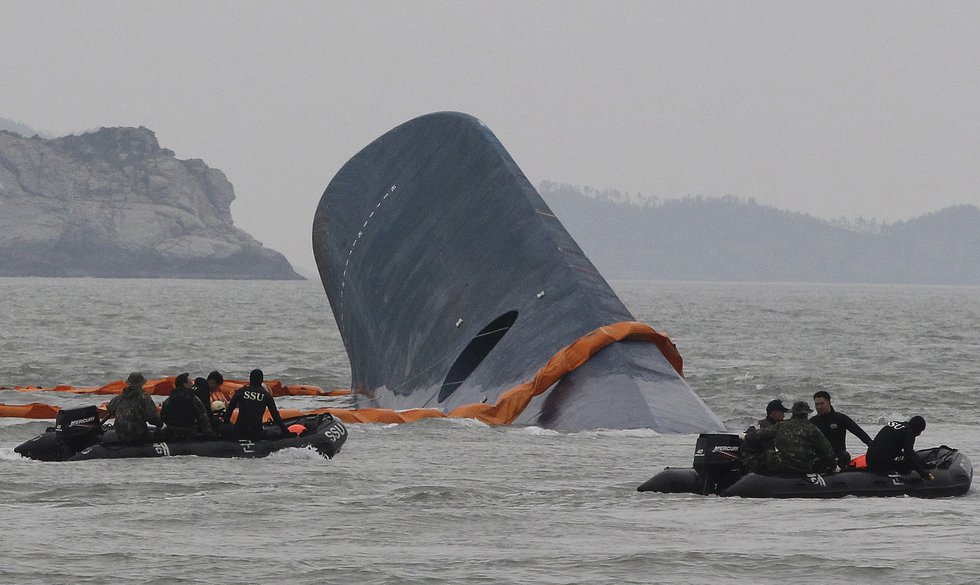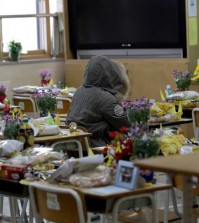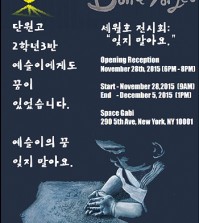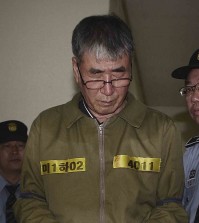- California Assembly OKs highest minimum wage in nation
- S. Korea unveils first graphic cigarette warnings
- US joins with South Korea, Japan in bid to deter North Korea
- LPGA golfer Chun In-gee finally back in action
- S. Korea won’t be top seed in final World Cup qualification round
- US men’s soccer misses 2nd straight Olympics
- US back on track in qualifying with 4-0 win over Guatemala
- High-intensity workout injuries spawn cottage industry
- CDC expands range of Zika mosquitoes into parts of Northeast
- Who knew? ‘The Walking Dead’ is helping families connect
Risk and worry await S. Korea’s work to lift doomed ferry
SEOUL, South Korea (AP) — Salvaging the corroded, 6,800-ton ferry Sewol from deep beneath a channel notorious for dangerous currents will be difficult, expensive and potentially risky. It will also be one more major headache for a government already reeling from accusations that its incompetence and corruption were partly responsible for the 304 people killed when the ship sank a year ago.
Experts say lifting the Sewol will prove much harder than previous efforts around the world to salvage giant ships, which sometimes ended up costing much more than originally estimated. There are questions about whether the South Korean government should be spending the estimated $91 million to $137 million needed to salvage the ferry, and there are worries about the decision to pull the ship up in one piece, rather than chopping it into sections.
Complicating decisions on how to conduct the salvage job are the still-raw emotions surrounding the April 2014 sinking. Most of the victims were teenagers from a single high school on a field trip to a southern resort island, and nine bodies have yet to be recovered.
Relatives of the victims hope that lifting the entire ship at once might reveal those bodies, along with new details about what happened. Slicing the ferry up would make salvage easier, experts say, but it could also damage any bodies still in the ship or allow them to be swept away.
Some doubt that any bodies could still be in the vessel. Divers spent several months picking their way through the ship, now 44 meters (144 feet) below the sea surface.
There are also safety worries. Two divers died during last year’s search efforts in the Maenggol Channel. Maenggol means “fierce bones,” and the waterway is notorious for strong, fast currents that slice through narrow passages between small islands.
“It’s very regrettable that the current atmosphere doesn’t let us say ‘No’” to salvaging the ship, ruling Saenuri Party lawmaker Kim Jin Tae wrote on Facebook on Wednesday. “There shouldn’t be any other victims during a salvage job that’s going to be much more difficult than the search for victims was.”
Recent public surveys, however, indicate that most South Koreans support the salvage job.
The sinking was the country’s deadliest maritime disaster in decades and, for a while at least, caused a rare bout of national soul-searching on long-ignored public safety and regulatory failures.
The disaster has been blamed on overloaded cargo and improper storage. Critics also say that botched rescue efforts and other negligence doomed those trapped inside, and that higher-level officials haven’t been held accountable.
Last weekend, violence erupted at a Seoul rally when enraged relatives and their supporters clashed with police. Dozens were injured and more than 70 police buses were destroyed.
The government officially announced Wednesday that it would raise the Sewol, after President Park Geun-hye promised to do so the previous week. Public Safety and Security Minister Park In-yong told reporters that officials made the decision after a review determined that salvage was possible, and in light of the wishes of the victims’ families and other citizens.
Detailed plans will come after officials select a salvage company. A South Korean government task force recently outlined a possible scenario where divers would drill 93 holes in the side of the Sewol. That would allow it to be tied to two huge naval cranes. The cranes would then lift the ship about 3 meters (9.8 feet) off the seafloor and move it up to a place where there’s better visibility. It would then be placed on a submerged dock and floated to the surface later.
The ferry now lies with its left side buried up to 1.5 meters (5 feet) on the seafloor. The government plans to lift the ferry as it is, instead of first pulling it upright.
Many past large shipwrecks around the world were first cut into sections. The Costa Concordia cruise liner, which capsized after hitting rocks near an Italian island in early 2012, killing 32 people, was raised in one piece, but the 115,000-ton vessel wasn’t completely submerged and was pulled upright before being hoisted.
Salvaging the Sewol will be more difficult than raising the Costa Concordia, said Chi-Mo Park, a professor of naval architecture and ocean engineering at Ulsan University.
South Korean officials acknowledge that the more than 20-year-old ferry might be damaged or even broken into pieces during the salvage operation, which is expected to take 12 to 18 months.
“It’s a very difficult task, with many variants,” said Kim Gilsoo, a professor at the Korea Maritime and Ocean University in Busan.
Kim said the direction of the channel’s tidal currents changes four times a day, along with various current speeds. That could complicate things for the two cranes, which must work together in precision to lift the ship.
Song Byeong Seon, an executive at the South Korean salvage firm Pacific Ocean Marine Industries Co., said the changing tidal currents would also give divers only a limited time to drill the 93 holes.
“There’s going to be a process of trial and error, especially considering the ship’s corrosion,” said Park, the professor. “You have to do whatever you can to reduce the possibility of workers’ injuries because they’ll be operating in a dangerous environment.”
Government officials say they’ll try to begin some tasks as early as September, such as removing the ship’s remaining oil and bringing in barges as work stations. They plan to stop work from November to February because of expected bad weather before resuming in the spring.
Conservative activist Jang Ki-jung says he will lead anti-government protests if officials don’t scrap plans to recover the ship with taxpayers’ money. He said it would be an expensive precedent for future civilian ship disasters.
















